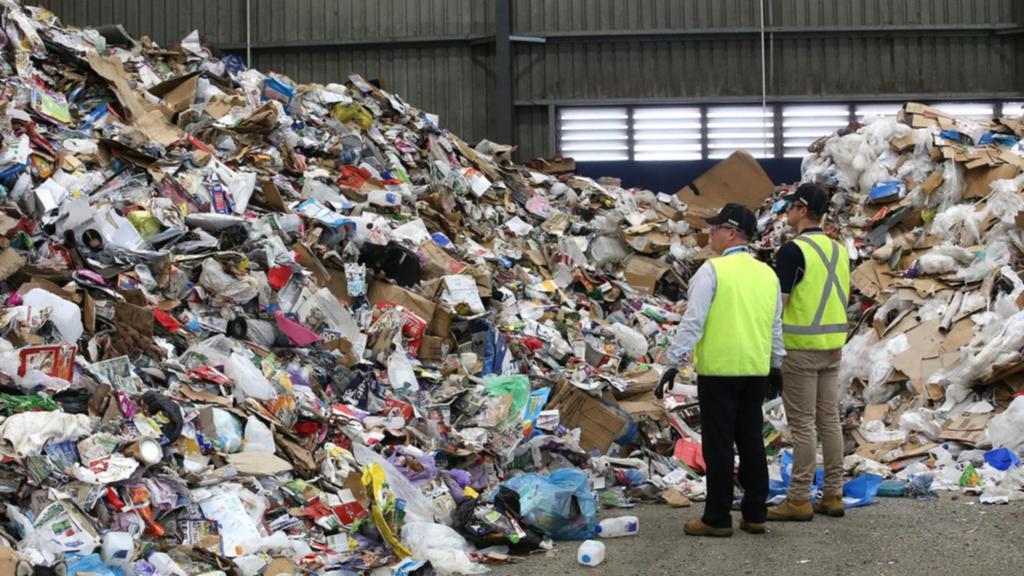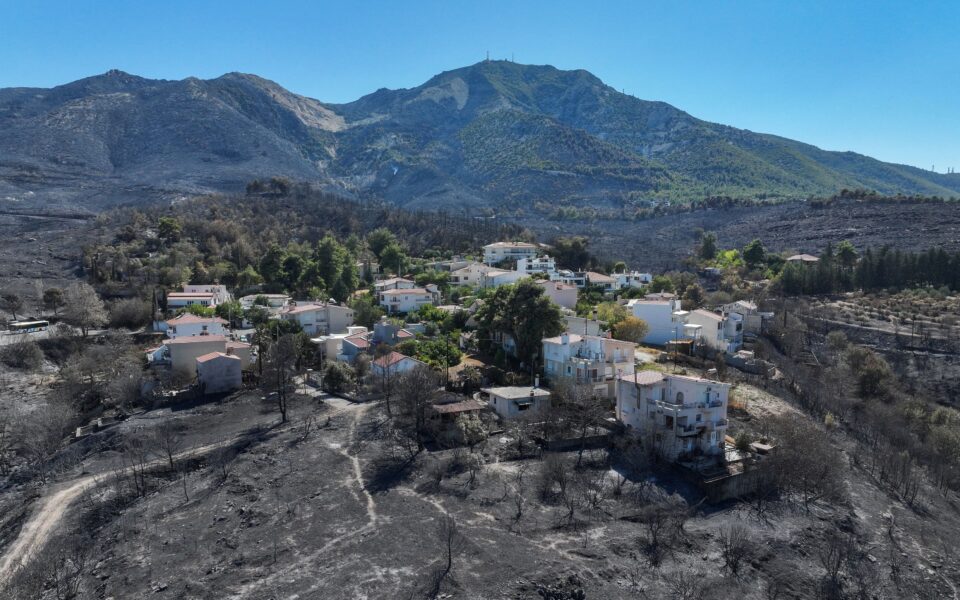Australia: When it comes to recycling, nearly ALL OF US have been doing it wrong


Recycling. Aussies have been doing it for years and surveys have long shown everyone is willing to do their bit to minimise landfill.
But despite their best intentions, experts say people are getting it wrong and it’s time for a refresher that will have profound benefits for the environment.
“We think we’re good recyclers,” says Pip Kiernan, daughter of pioneering waste warrior Ian Kiernan, who spent almost 30 years literally cleaning up Australia.
“We care about recycling – 89 per cent of Australians say it’s really important. But only 25 per cent of us are doing it correctly.”
Kiernan is quoting from a survey on the recycling habits of Australians released this year by Cleanaway, one of the companies that picks through the nation’s waste and harvests resources ripe for rebirth.
Last financial year, Cleanaway diverted 538 kilotons of paper, cardboard, plastic, steel and aluminium from landfill.
If that boggles, try thinking of it this way.
It’s roughly the weight of 10 Sydney Harbour Bridges of material that is, or soon will be, new stuff.
As big as that number is, it could be vastly higher for Cleanaway and other companies like it if well-meaning Australians take a moment to reacquaint themselves with dos and don’ts of kerbside recycling.
This week marks the 25th anniversary of National Recycling Week, established by Planet Ark in 1996 to encourage Australians to tread more lightly on Earth.
Ryan Collins is in charge of Planet Ark programs designed to transform the old “take, make and dispose of” mindset into a circular economy that re-purposes and reuses everything.
He and Kiernan are in agreement about Australia’s worst recycling crimes.
But they say tackling the top five will have a profound impact on how much is recycled and how much ends up buried in the ground.
1. WHAT TO DO WITH SOFT PLASTICS
If it can be scrunched it into a ball, it’s a soft plastic: bread bags, snack food wrappers, plastic carrier bags, some cling films, squeeze pouches, bubble wrap, even netting bags used for onions and lemons.
These are recyclable but don’t belong in recycling bins because they jam automatic sorting machines.
They must be collected separately, through REDcycling bins provided in most major supermarkets.
This kind of waste should be returned empty and dry. A little contamination is OK but rinse and dry instead of returning it dripping in sloppy food waste.
Recyclable soft plastics do not include: sticky tape, balloons, disposable gloves, drinking straws, foil, clear vinyl packets used for new sheets and doonas, plastic strapping or foam or polystyrene of any kind, including soft flexible foam.
2. STOP PUTTING RECYCLABLES INTO RUBBISH BAGS
Too many Australians bag bottles, tins, jars and cardboard before putting them into recycling bins.
Plastic rubbish bags are soft. They don’t belong in kerbside recycling streams.
Bagging recyclables often means they are plucked whole from sorting lines and redirected into landfill.
Recyclable goods should go into the bin loose.
3. CLOTHES AND OTHER TEXTILES
Strangely, this is no small problem. Green groups talk about “wish-cycling”, where people cross their fingers and hope a once treasured item will be saved by some faceless person at a sorting centre somewhere.
But just because the mohair-blend sweater handed down from Aunty Doris was much-loved doesn’t mean it’s destined for reuse.
Clothing and textiles also jam sorting machines.
Donate good quality textiles to charity stores that re-sell them.
4. DO NOT BIN YOUR BATTERIES
Batteries have no place in recycling or general waste bins because they can, and regularly do, start fires inside the bellies of garbage trucks, at recycling depots and landfill sites.
They also contain hazardous cadmium, mercury and lead that contaminate soil and water.
There’s a recycling scheme for pretty much every battery out there, from cylindrical the AAA’s in the TV remote, to button batteries, to those that power computers, mobile phones and cars.
Planet Ark says few batteries are collected for recycling but most of their components can be reused when they are.
In fact harvested battery components are often used to make new batteries.
5. PIZZA BOXES AND OTHER ITEMS CONTAMINATED WITH FOOD
Recyclables don’t have to be entirely clean but as a rule of thumb should be rinsed, dried and free of goopy food remnants.
No-one is going to recycle a grease-soaked pizza box covered in cheese and tomato sauce.
And paper and cardboard won’t be harvested for reuse if sodden with runoff from a baked beans can.
FOOD CONTAINERS
Planet Ark says Australians understand that cans, plastic and glass bottles, jars, paper and cardboard belong in household recycling bins.
But what about hybrid packaging that’s a bit of this and a bit of that? The best thing is check the packaging for the Australasian Recycling Label. It shows which bit goes in which bin.
Not all products carry the label but there are other options.
Try the Recycle Mate app, developed by the Australian Council of Recycling with some federal government funding. From a photo of a product, the app can tell what it is and what to do with it.
Otherwise ask the local council, as recycling rules can very from region to region.
PRINTER CARTRIDGES
Another no-no for household recycling bins but they can be recycled.
Major retailers including JB HiFi, Australia Post, Officeworks, Hervey Norman accept them.
They are used to make a range of new products. Left over ink is harvested and used to make artists’ ink. Toner is used in TonerPlas, an asphalt additive that is also made from plastic bags and glass bottles.
Cartridge casings are used in products from pens to furniture.
PAINT
Paintback is a paint industry initiative that aims to keep paint and packaging out of landfill and waterways.
Tradies and households can return unwanted paint to authorised collection points.
The paint and the packaging are then separated. Containers are recycled where possible.
Solvent paint is used as an alternative energy source. Water is separated from acrylic paint and the by-product is used in a variety of industrial applications.
MATTRESSES
There are options to recycle saggy old mattresses depending on the location.
One operator of note is Soft Landing, which operates in NSW, Victoria, the ACT and Western Australia.
It harvests steel to send to Australian scrap metal recyclers and foam which goes to carpet-underlay manufacturers, to create jobs for people who’ve faced barriers to employment.
ONE LAST THING
Australians are being asked to stop thinking of waste as rubbish and start seeing it as a valuable commodity.
“In a circular economy, recycling is one of the ways we can reduce our demand on natural resources. We need to keep as many materials as we can in circulation,” Collins says.
“Waste is a resource, we just need to get it in the right bin,” Kiernan echoes.
Earlier this year, the federal government released its National Plastics Plan.
The second paragraph of the introduction shows just now much work there is to do.
Australia produces about 2.5 million tonnes of plastic waste annually.
That’s about 100kg per person.
Only about 13 per cent is recovered.
The rest is still dumped in landfill when it could be road base, furniture, new plastic containers and so much more.
Then there’s what ends up in the sea – about 130,000 tonnes, each and every year.
By 2050 it’s predicted the amount of plastic in the world’s oceans will outweigh the biomass of all fish species.
This figure is especially hard for Kiernan to accept given her father founded Clean Up Australia almost 30 years ago, after a round-the-world yacht race left him in despair about the amount of rubbish in the sea.
Ian Kiernan liked to remind Australians they could have a cleaner country in exchange for “simple, easy actions”.
“There is not one individual who cannot help to make a difference to the health of the environment,” he said.
Source: 7news.com.au




